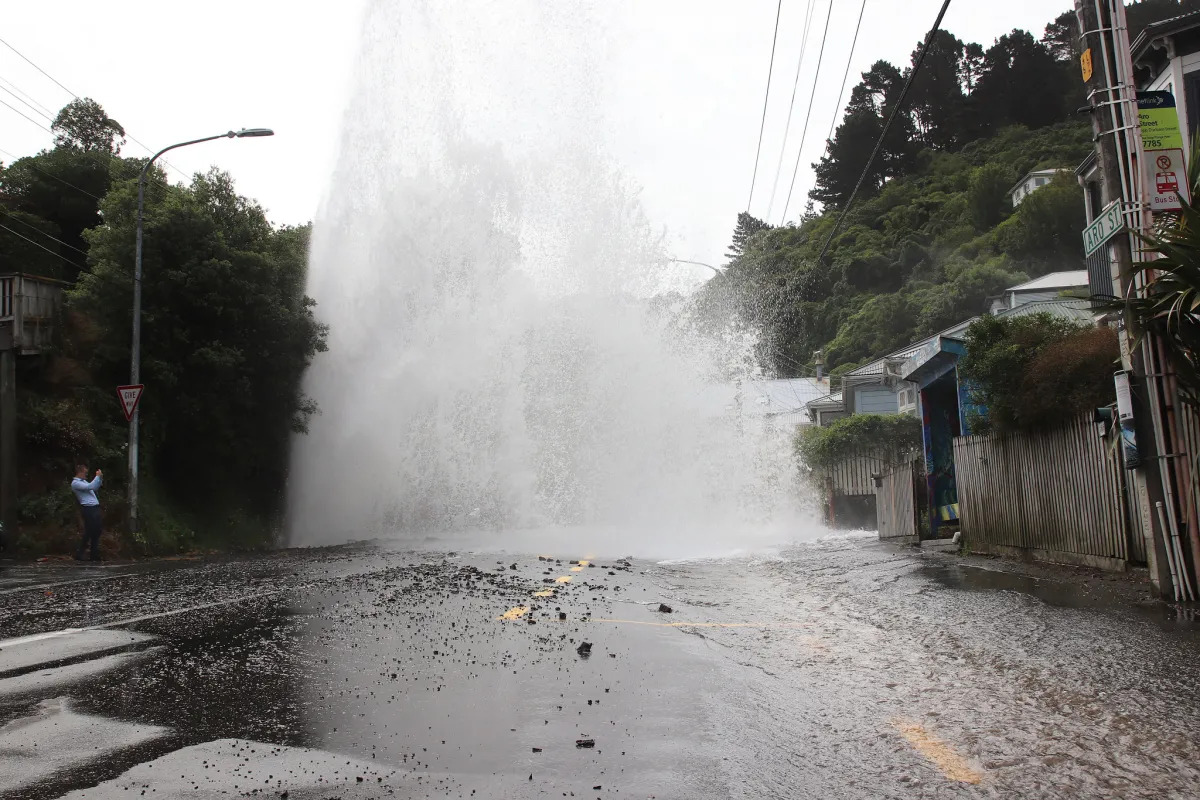The State of Water Infrastructure in New Zealand: Challenges for Builders and Developers
New Zealand’s water infrastructure – encompassing drinking water, stormwater, and wastewater – faces severe challenges. Years of underinvestment and fragmented management have left many regions unable to support new developments, leading to construction halts, rising costs, and uncertainty for builders and developers.
The problem is compounded by local councils increasing development contributions to fund critical infrastructure upgrades. Without significant intervention, these challenges will escalate, impacting the housing market and the broader construction industry.
The Scale of the Challenge
A recent report by the New Zealand Infrastructure Commission (Te Waihanga) highlights the country’s substantial infrastructure deficit, estimating that an additional $104 billion in public capital is needed to address existing shortfalls.
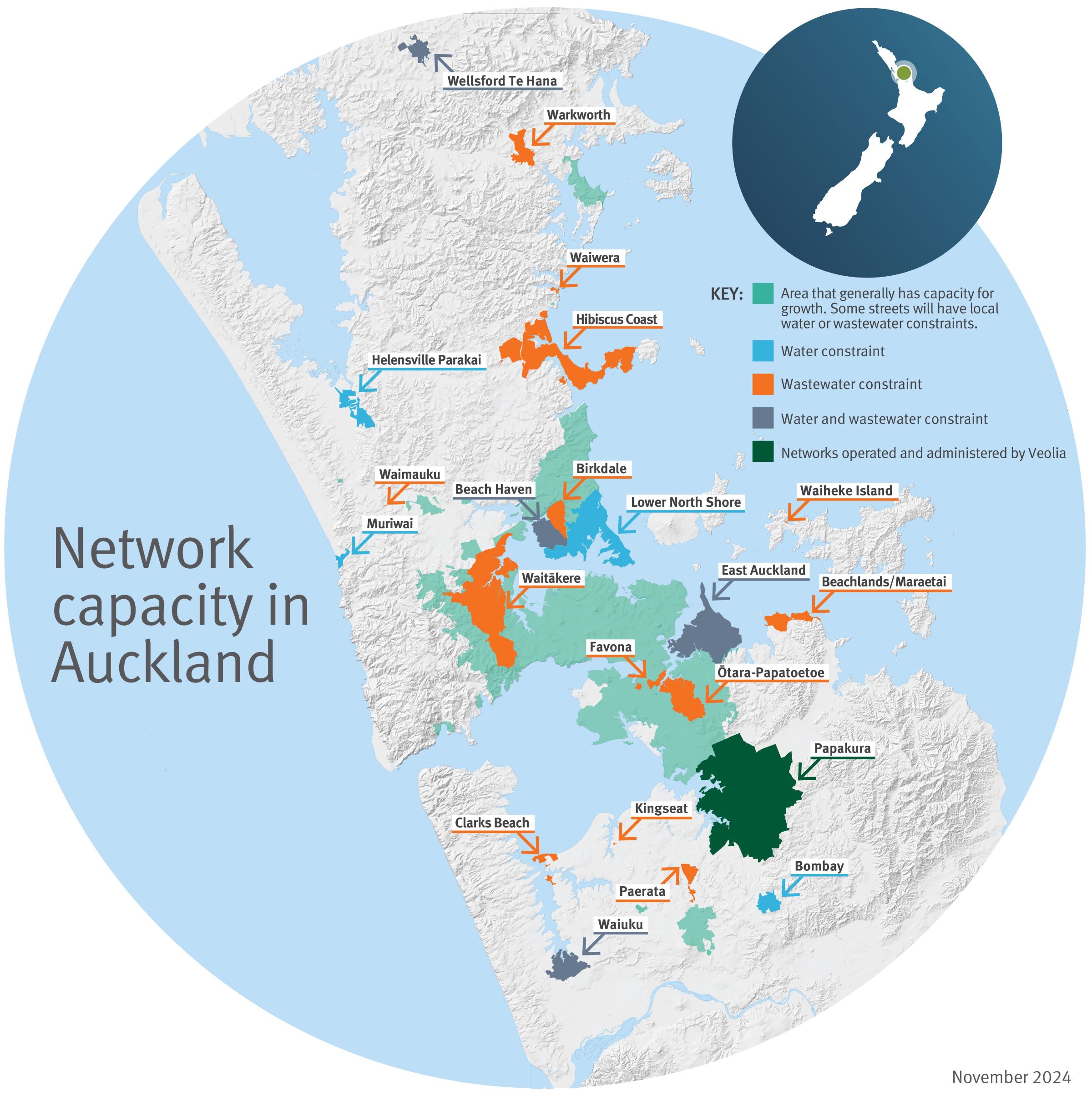
Image credit: Watercare NZ. This map highlights areas in Auckland with capacity in our water and wastewater networks for new housing, as well as constrained zones.
In Auckland, Watercare has designated 21 suburbs as ‘red zones’, restricting new water connections due to wastewater constraints.
In Warkworth, a new housing development has stalled because the existing wastewater treatment facility on the Mahurangi River is at capacity. Until a new facility in Snells Beach becomes operational (expected by mid-to-late 2025), properties south of the river cannot connect to the wastewater system.
Similarly, in Martinborough, the South Wairarapa District Council halted new sewage connections in 2023, citing that the existing treatment plant had reached its limit—delaying housing development in the town by at least two years.
And in Hawke’s Bay, despite ambitious plans to build thousands of homes, water allocation challenges threaten the region’s ability to support new development.
The Need for Government Action
Aidan Jury, Franchise Director of Jennian Holdings, has been vocal about the urgency of the issue. He says he believes that New Zealand’s infrastructure deficit can be traced back to the disbanding of the Ministry of Works.
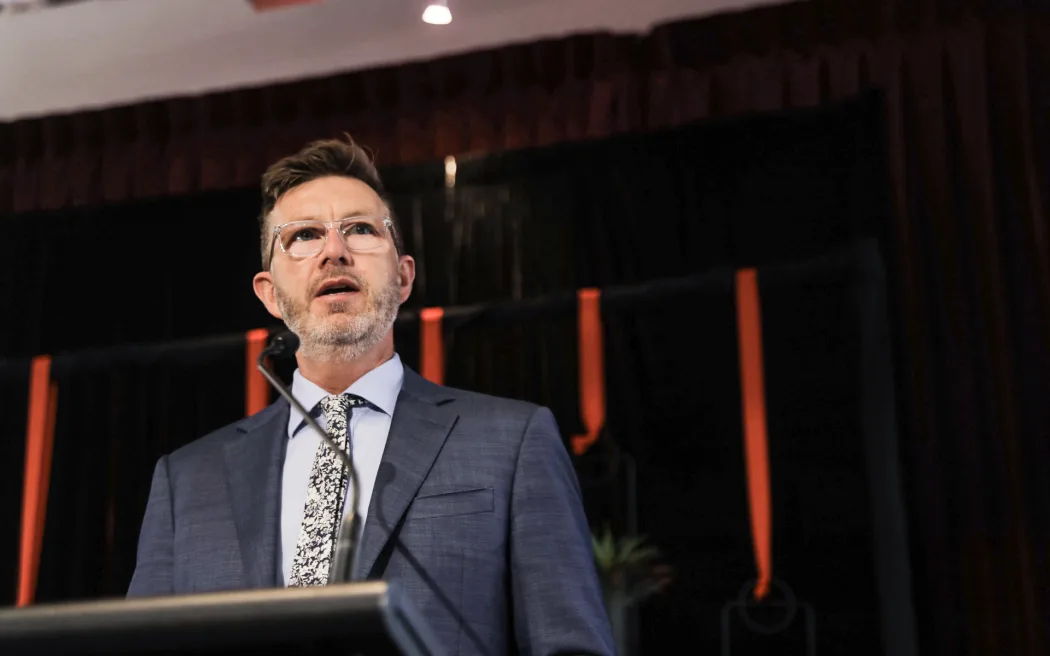
Image credit: RNZ / Samuel Rillstone. ACT MP Simon Court speaks at the shake-up of council infrastructure funding announcement on 28 February 2025.
“The Ministry of Works used to get things done,” Jury says. “It was funded, and costs were allocated across various authorities. Now, with councils managing infrastructure independently, there is fragmentation, duplication and inefficiency.”
Jury highlights regions such as Masterton, South Wairarapa, and Carterton as places currently unable to issue building consents due to failing freshwater and wastewater infrastructure. And in Auckland, he says there’s a number of places where a sewer truck needs to be hooked up to take the pressure off the network.
He calls for a more unified approach, suggesting councils consolidate efforts, much like Auckland’s Watercare model.
Changes to Infrastructure Levies
In response to these concerns, the government – led by Infrastructure Minister Chris Bishop – recently announced a major overhaul of infrastructure funding. The proposed changes aim to replace existing development contributions with a pre-set levy system, ensuring that infrastructure funding is more predictable and equitable.
Bishop plans to introduce a system where those who benefit from new infrastructure contribute to its cost. This will include levies on new roads, public transport hubs, and water infrastructure projects, overseen by a new regulator to prevent councils from arbitrarily increasing charges.
Wellington Goes It Alone
No region in New Zealand faces as many infrastructure challenges as Wellington. Apart from being located on a fault line and dealing with leaky, aging pipes, political infighting has stalled meaningful long-term progress.
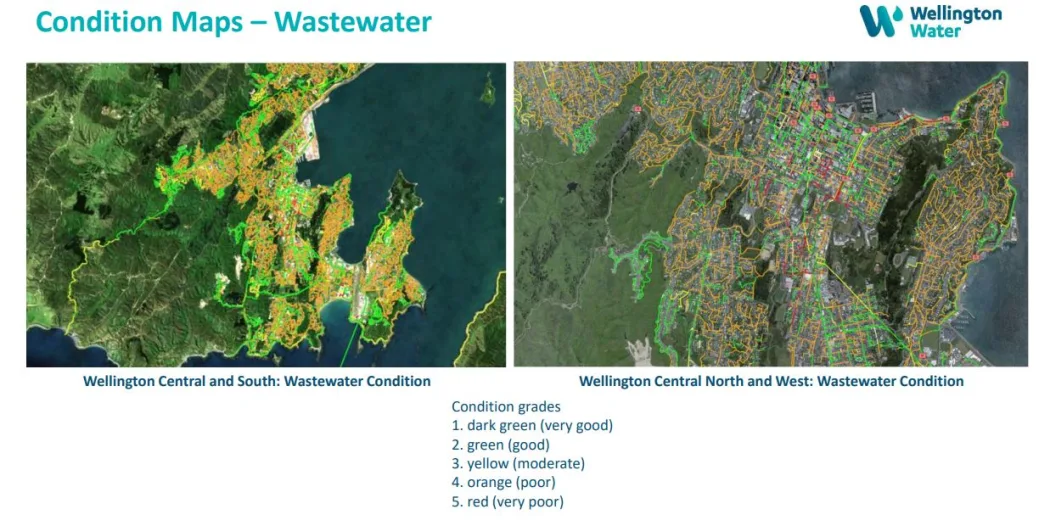
Image credit: RNZ – Almost half of Wellington wastewater pipes ‘poor’ or ‘very poor’.
In May 2024, Wellington City Council (WCC) joined a memorandum of understanding with nine other councils to explore the creation of a regional water services organisation under the Local Water Done Well framework.
By December 2024, three collaboration options were developed with Upper Hutt, Hutt City, Porirua, and Greater Wellington Regional Councils. However, as of March 2025, WCC had not committed to any of these options, stalling regional collaboration efforts.
New Zealand’s water infrastructure crisis requires urgent Government action. Without significant investment and strategic reform, the construction sector will continue to face delays, cost blowouts, and project cancellations.
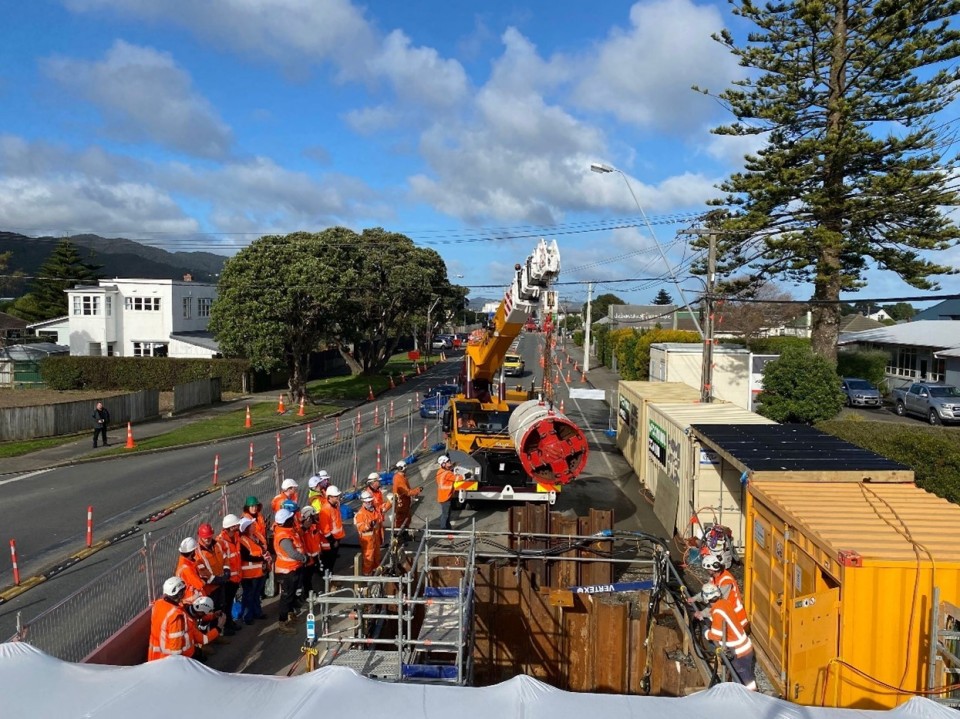
Image credit: Wellington Water.
Industry leaders, including Aidan Jury and Richard Templer, highlight the critical need for a coordinated, Government-led approach to infrastructure development. As Jury says: “We do need to catch up with the infrastructure deficit and I think the government needs to take control because they’re the only people with a purse that can manage a project of this scale.”
Addendum: New Hibiscus Coast Wastewater Restrictions Impact Development
A recent decision by Watercare to halt new wastewater connections on Auckland’s Hibiscus Coast has drawn strong criticism from developers, who warn it will cripple much-needed housing growth in the area. Only developments with resource consent approved before 15 November 2024 can connect to the wastewater network, with no new connections allowed until an upgrade to the Army Bay treatment plant is completed – currently not expected until 2031.
Developers, including Hopper Development and individual landowners, say they were blindsided by the decision, having invested heavily in planning and design with no prior warning. Watercare maintains that 4,000 connections remain available, enough to support projected growth for the next five years, and argues the move is necessary to protect environmental and public health outcomes.
However, industry leaders argue the restriction will stall development, push up house prices, and drive skilled workers away from the region. They are calling for faster solutions or central government intervention. Meanwhile, Watercare acknowledges that similar constraints may emerge in other Auckland suburbs and has urged early engagement with developers moving forward.

